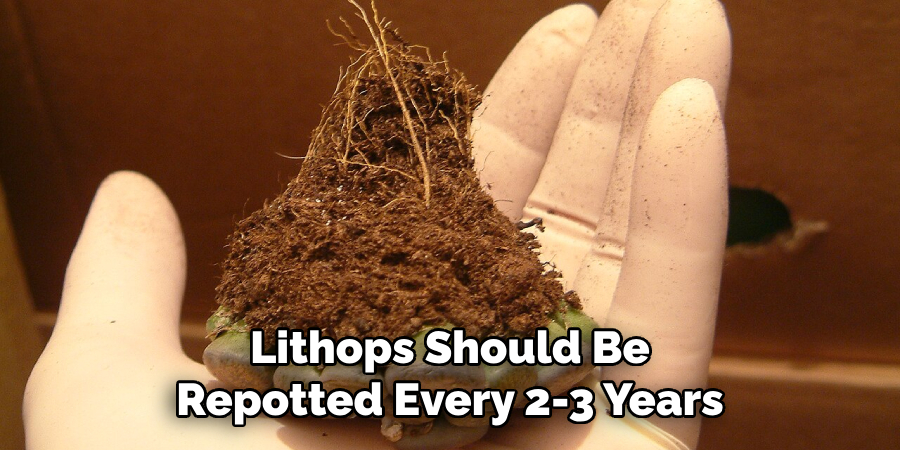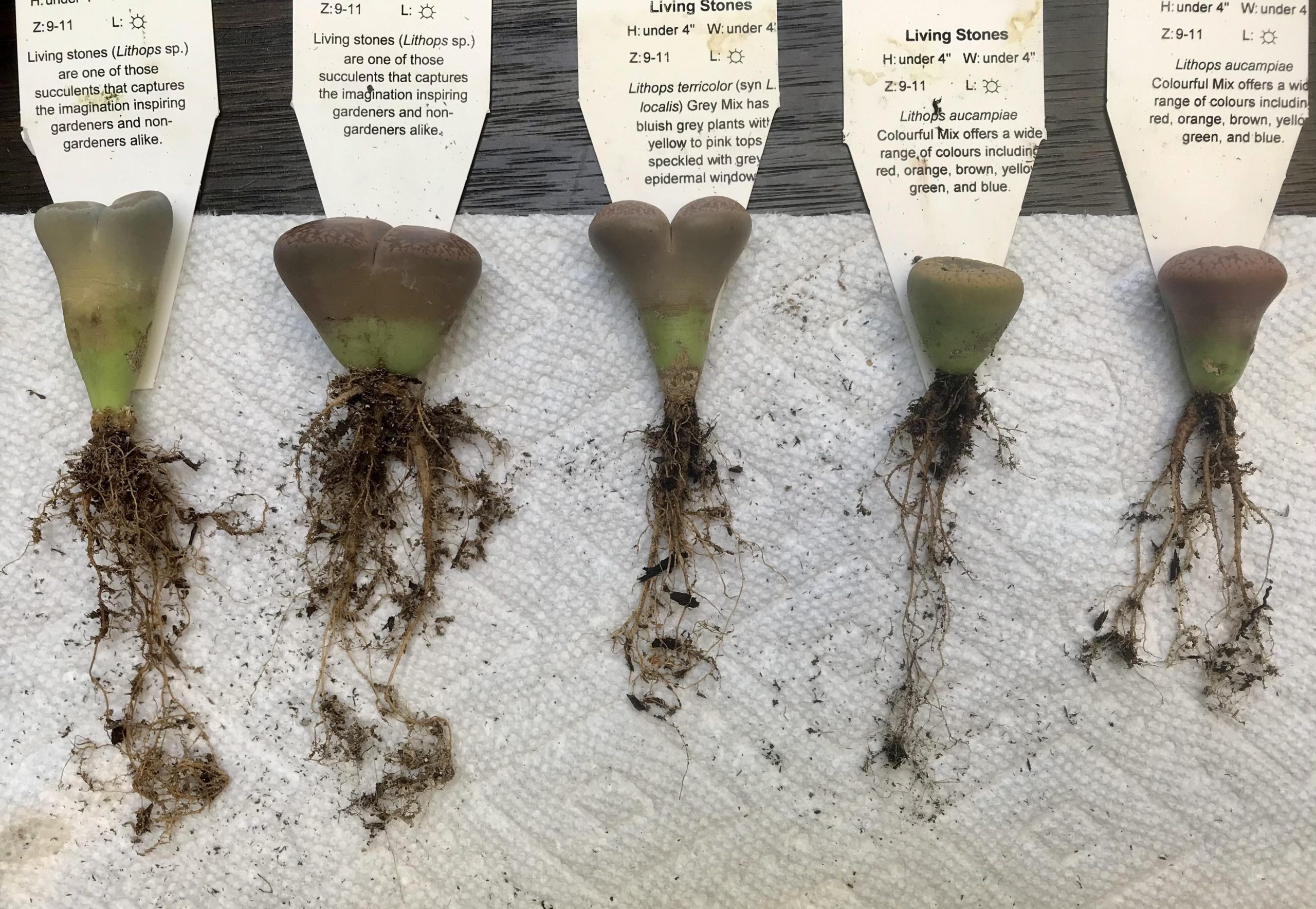To repot lithops, carefully remove the plants from their current container and gently separate the root system, taking care not to damage the delicate leaves or stems. Then place them in a new container with well-draining soil mix and firm it gently around the roots.
Water sparingly and avoid getting water on the leaves to prevent rotting. Lithops, also known as living stones, are fascinating plants that resemble pebbles or rocks. These unique succulents have adapted to survive in arid conditions by storing water in their thick, fleshy leaves.
As they grow, lithops may outgrow their current container, necessitating a repotting process. Repotting lithops is a delicate procedure, as their succulent leaves and stems are fragile. We will explore the steps to repot lithops, ensuring the health and longevity of these remarkable plants. So, let’s dive into the process of repotting lithops and provide them with the proper care they need.

Credit: www.youtube.com
How to Repot Lithops: Step by Step Guide
Choosing The Right Potting Mix
Choosing the right potting mix is crucial when repotting lithops. A well-draining mix is essential for their growth. A recommended potting mix should consist of components that allow excess water to flow out easily. Using materials like perlite, coarse sand, and pumice helps create a well-draining mixture.
These components prevent the soil from becoming overly saturated, which can cause root rot. By having a well-draining mix, lithops can thrive in their new pot, with their roots getting enough air circulation. So, ensure you choose a potting mix that provides optimal drainage for your lithops to keep them healthy and happy.
Preparing The Lithops For Repotting
Lithops, also known as living stones, are fascinating succulent plants that require occasional repotting. One sign that your lithops needs repotting is when the plant becomes too large for its current container. Another indicator is when you notice the plant’s roots growing out of the drainage holes.
Timing and frequency of repotting depend on the growth rate of your lithops. Generally, it is recommended to repot lithops once every 2-3 years during the spring or early summer when they are actively growing. When repotting, ensure that you use well-draining soil specifically formulated for succulents.
Gently lift the lithops from its current pot, being careful not to damage the fragile leaves. Place the plant in a slightly larger container and fill in the gaps with fresh soil. Finally, water sparingly and avoid direct sunlight for a few days to allow the plant to adjust to its new home.
|
Repotting Guide
Repotting your lithops is a simple process that can help ensure its health and vitality. Gather the necessary tools and materials before starting. Carefully remove the lithops from its current pot, being mindful of the delicate roots. Inspect and prepare the roots, trimming any damaged or unhealthy sections.
Select a new pot that is the appropriate size for your lithops. Place the lithops into the new pot, making sure it is centered and positioned correctly. Backfill the pot with the appropriate potting mix, ensuring that it is evenly distributed.
Water the lithops gently, allowing the excess water to drain out. Finally, let the plant settle in its new pot, placing it in a suitable location for optimal sunlight and growth. Following these steps will help your lithops thrive in its new home.
Caring For Repotted Lithops
When repotting lithops, it is important to provide them with ideal light and temperature conditions. These unique plants thrive in bright indirect sunlight and temperatures between 70 and 80 degrees fahrenheit (21 and 27 degrees celsius). Avoid direct sunlight, as it can cause scorching on their succulent leaves.
As for watering guidelines, it is crucial to water lithops sparingly and only when their leaves start to wrinkle. Overwatering can lead to root rot, so it is best to let the soil dry out completely between waterings. When handling repotted lithops, be gentle and avoid touching their delicate leaves, as this can cause damage.
Maintenance wise, keep an eye out for any signs of pests or diseases and address them promptly. Following these guidelines will help ensure the health and longevity of your repotted lithops.
Troubleshooting Common Repotting Issues
Repotting lithops can sometimes lead to common issues like overwatering and root rot. It’s crucial to prevent overwatering by allowing the soil to dry fully between watering sessions. This helps maintain the plant’s health and prevents roots from rotting. Another issue to consider is transplant shock, which can occur when moving lithops to a new pot or location.
To minimize transplant shock, handle the plants with care, avoiding any damage to the roots or leaves. Additionally, closely monitor the plants after repotting to ensure they adjust well to their new environment. Lastly, be vigilant for pests and diseases that might affect lithops.
Regularly inspect the plants for any signs of infestation or infection, and take appropriate measures, such as applying organic pesticides or using suitable disease prevention methods. By following these guidelines, you can ensure a successful repotting process for your lithops.
Frequently Asked Questions On How To Repot Lithops
How Often Should I Repot Lithops?

Lithops should be repotted every 2-3 years, or when you notice the plant has outgrown its current pot. Repotting during the active growing season, which is typically in spring or summer, is recommended for best results.
What Type Of Soil Should I Use When Repotting Lithops?
When repotting lithops, it’s important to use a well-draining soil mix. A mixture of equal parts of cactus soil, perlite, and coarse sand works well. Avoid using regular potting soil or mixtures that retain too much moisture, as this can cause the plants to rot.
How Do I Repot Lithops Without Damaging The Plant?
To repot lithops without damaging the plant, gently loosen the soil around the plant using a small garden tool or your fingers. Carefully lift the plant from its current pot, taking care not to disturb the roots too much. Place the plant in the new pot, ensuring it sits at the same level as before, and fill in the gaps with the soil mix.
Avoid over-watering immediately after repotting.
Can I Repot Lithops During The Dormant Season?
It is generally recommended to avoid repotting lithops during their dormant season, which occurs in fall and winter. Repotting during this time can disturb their growth cycle and potentially cause stress to the plant. It’s best to wait until the active growing season, which is typically in spring or summer, to repot your lithops.
How Do I Know If My Lithops Needs To Be Repotted?
If you notice that your lithops is becoming crowded in its current pot, with roots starting to grow out of the drainage holes or the plant lifting itself slightly out of the soil, it’s a good indication that it needs to be repotted.
Additionally, if the plant hasn’t been repotted in the last 2-3 years, it’s a good idea to give it a fresh potting mix and a larger container.
Conclusion
To sum up, repotting lithops is an essential task to ensure their healthy growth and longevity. By following the proper techniques discussed in this blog post, you can successfully repot your lithops without causing any harm to the plants. Remember to choose the right potting mix and container size, provide adequate drainage, and handle the lithops with care.
Regularly monitoring their watering and sunlight needs will help them thrive in their new pots. Repotting lithops can be a rewarding experience as it allows you to witness their fascinating growth and transformation. So, don’t hesitate to give your lithops the perfect home they deserve.
With patience and proper care, your lithops will continue to bring joy and beauty to your indoor or outdoor garden for years to come.

